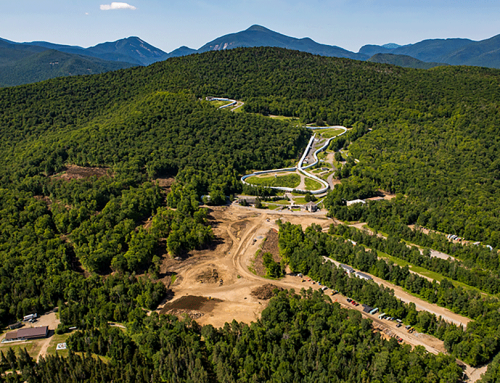EPA’s repeal plan makes ignoring the impacts of climate change the official plan of the Trump Administration and federal government
The Clean Power Plan not only would have put U.S. on path towards lower carbon emissions, but would have all but ended acid rain
Protect the Adirondacks opposes the new plan by the Trump Administration and US Environmental Protection Agency (EPA) to abandon the Clean Power Plan set up by the Obama Administration. This is an enormous set back for US policy on climate change and will have negative impacts in the Adirondacks as progress on significant reductions in acid rain over the past 20 years may be lost. The US EPA announced on October 9, 2017 that is was starting the process to take formal steps to officially repeal the Clean Power Plan.
The Obama Administration Clean Power Plan called for greenhouse gas emission reductions for over 1,000 existing power plants in the US. It was seen as a major landmark in environmental history because it was the first national C02 reduction program. The Clean Power Plan was similar in scope to the creation of the national Clean Water Act, Clean Air Act, Wilderness Act and Endangered Species Act. EPA estimated that 83% of greenhouse gas emissions are from carbon dioxide (C02) released into the atmosphere. As a group these 1,000 coal-fired power plants are the single largest sources of C02 pollution in the U.S., producing nearly 25%. The Clean Power Plan was expected to produce a 20% reduction in C02 emissions from these power plants by 2020 and 30% by 2030 (based on 2005 levels). Other major C02 reductions were achieved by Obama actions to increase fuel efficiency and tailpipe emission standards on automobiles by raising mileage rates from an average of 36 miles per gallon to over 54 by 2025. The Trump Administration announced plans in March to rollback the automobile standards.
“The spate of massive hurricanes, floods, and wild fires we’ve seen in the past month is the new normal. These catastrophes are a pretty clear message from planet Earth that we need to make changes, and make them fast, to reduce carbon pollution and stop warming trends. The Trump Administration and EPA are ignoring reality and pretending that we can continue with the status quo, which is clearly unsustainable. This is an exceedingly poor decision,” said Peter Bauer, executive director of Protect the Adirondacks.
According to the EPA these are the basic facts. The making of electricity produces 32% of C02 emissions in the U.S. followed by the transportation sector at 28%, industry at 20%, commercial/residential at 10% and agriculture at 10%. The biggest fuel source used for the production of electricity is coal, which while it supplies 39% of electricity made, it produces 75% of CO2 emissions from the electricity sector. About 29% of electricity in 2012 was generated using natural gas, which has grown by the hydro-fracking boom, followed by 20% from nuclear and 12% from renewables. Coal-fired power plants are the single biggest “stationary source” of C02 pollution emissions as they produce fully 25% of U.S. C02 pollution.
A key component of the Clean Power Plan is that each state was required to develop a C02 reduction plan. If a state refused to develop such a plan, then the EPA would draft a plan for them. A key part of the Clean Power Plan was new reduction levels set by the EPA, which power plants could meet using a new cap-and-trade program for carbon pollution credits, similar to the longstanding and successful program for acid rain pollutants sulfur dioxide (S02) and Nitrogen Oxide (S0x).
“The cap-and-trade program has been a national success story since it was started in the 1990 Clean Air Act Amendments signed by President George H.W. Bush. The Clean Power Plan incorporated the same cap-and-trade approach to achieving reductions in pollution using free market principles of supply and demand. Now, with the absence of federal leadership on carbon reduction, the best hope is to look towards state action from places like California and New York,” said Peter Bauer.






